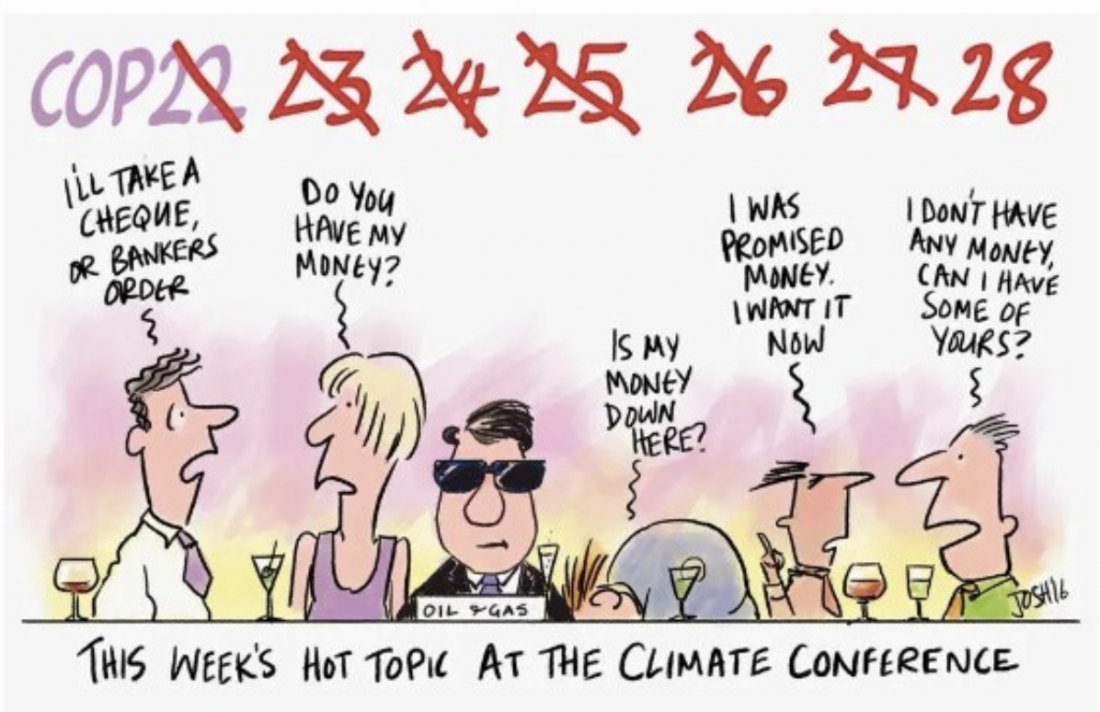 (Source: Cartoons by Josh)
(Source: Cartoons by Josh)
I had two objectives with this blog. One was to start summarizing COP28, which started on November 30th and is scheduled to close today. The second objective was to strongly encourage my students to follow up on the COP28 developments as they unfold by “promising” them that some of the figures that play a role in the meeting will be probed in the final exam that is scheduled for next week. From my perspective, the two objectives are complementary.
I asked AI through Google to define COP28; below is what I got:
Generative AI is experimental. Info quality may vary. Learn more
Here’s some data from COP28:
- Greenhouse gas emissions: The United Arab Emirates’ (UAE) greenhouse gas emissions increased by 7.5% in 2022, compared to a 1.5% increase globally.
- Temperature: The decade was the warmest on record, with more countries reporting record high temperatures than any other decade. The planet’s average surface temperature has risen about 2 degrees Fahrenheit (1 degrees Celsius) since the late 19th century.
- Glaciers: Glaciers thinned by roughly 1 meter per year.
- Sea ice: Sea ice loss was unprecedented.
- Fossil fuel lobbyists: At least 2,456 fossil fuel lobbyists registered to attend the summit, which is more than almost every other country delegation.
- Participants: A total of 100,446 delegates registered to attend the summit in person and virtually.
The two previous COP (Conference of the Parties) meetings that are relevant to COP28, are COP21 (also known as the meeting that framed the Paris Agreement), which was covered in a series of previous blogs (between November 2015 and January 2016), and last year’s meeting (COP27), which was covered in the November 22, 2022 blog.
The official site of COP28 is here.
The first item in the AI definition of COP28 is the obvious fact that it is being held in Dubai, the largest city in the United Arab Emirates (UAE), a country whose greenhouse gas emissions are increasing five times faster than global emissions. UAE is clearly a petrostate (see February 8, 2022 blog). AI got its “inspiration” from broader public opinion about conflicts between petrostates and the rest of the world, regarding how to mitigate and adapt to climate change. COP28’s president is Sultan Ahmed Al Jaber. He is also the minister of industry and advanced technology of the United Arab Emirates,[2] head of the Abu Dhabi National Oil Company (ADNOC),[3] and chairman of Masdar. Some think that the future of fossil fuels could be decided in Dubai.
The next three highlights stem from the warmest probed global temperature record of 2023, based on recordings such as those shown in Figure 2.
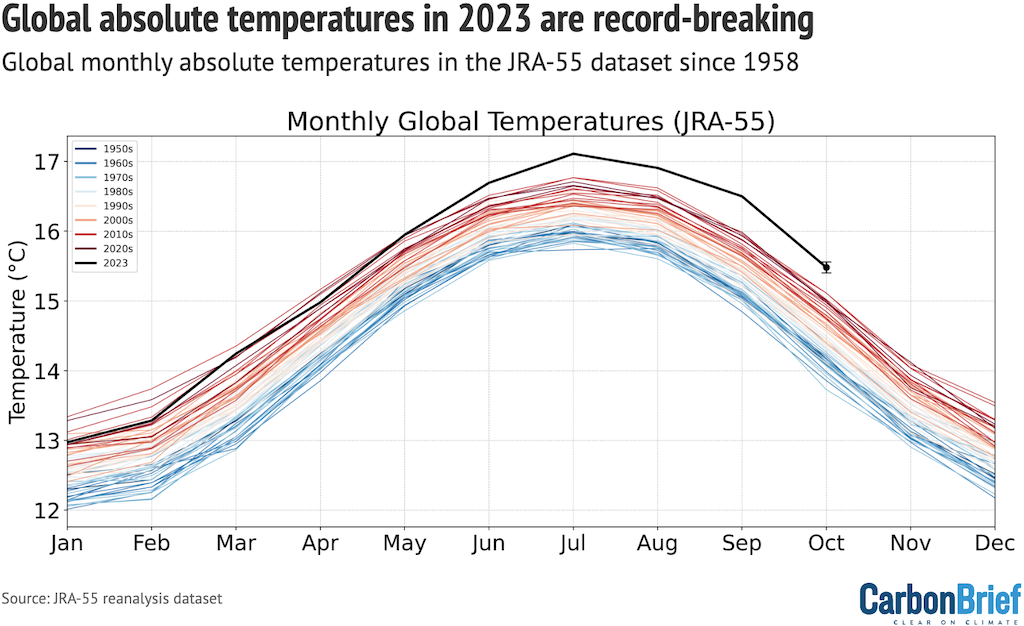
Figure 2 – 1950s-2023 global monthly absolute temperatures (Source: CarbonBrief)
The last two AI highlights are directly connected to lobbying and attendance. The number of lobbyists is enormous.
What are missing from the short AI description are important content descriptions that include intended global actions to limit methane emissions (the main component of natural gas), and the continuous issue of how much funding developed countries will provide for adaptation steps needed in the developing countries. Below, I will follow up with some details to rectify these two omissions:
Nov 27 (Reuters) – Delegates at this year’s U.N. COP28 climate summit are anxious to boost the world’s climate change agenda with concrete plans for clamping down on the second-most prominent greenhouse gas – methane.
While more than 150 countries have promised since 2021 to slash their methane emissions 30% from 2020 levels by 2030 under the U.S.- and EU-led Global Methane Pledge, few have detailed how they will achieve this.
The extent and the sources of these steadily growing emissions are shown in Figure 3 (taken from one of the links in the article above).
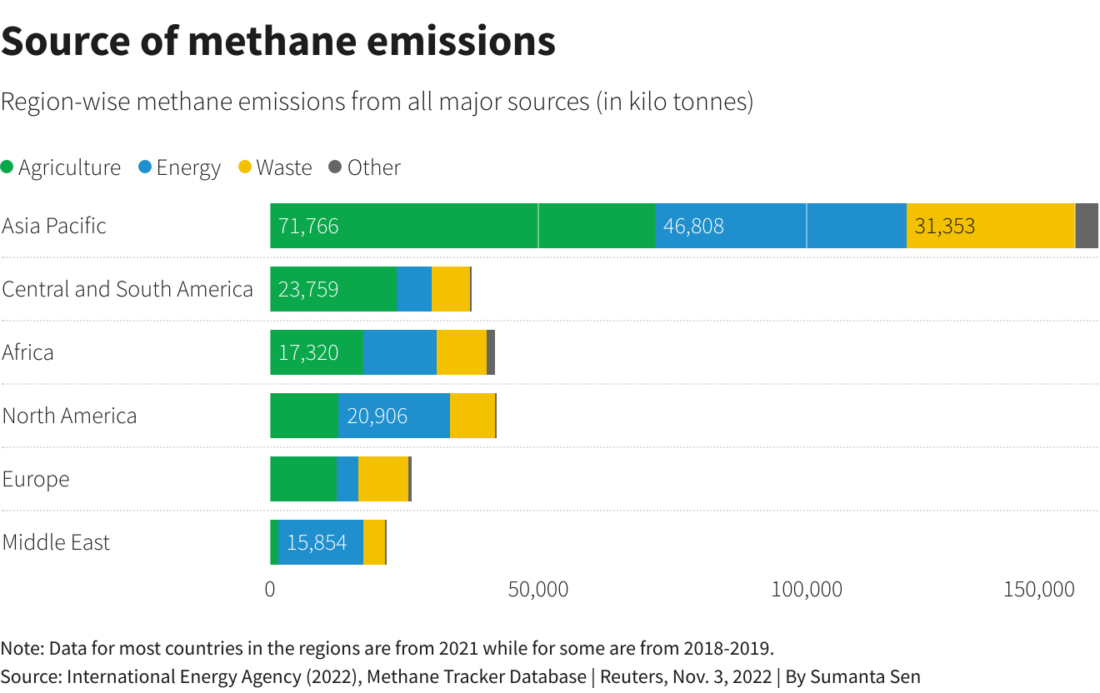
Figure 3 – Sources of methane emissions by region (Source: Reuters)
Loss and Damage Fund:
The need for a loss and damage fund was described in a previous blog (December 7, 2022). A decision was made to discuss the specifics of creating this new fund over 2023 and vote in COP28 over the proposed structure. The present situation is discussed in the following link:
Wealthy countries most responsible for the climate emergency have so far pledged a combined total of just over $700m (£556m) to the loss and damage fund – the equivalent of less than 0.2% of the irreversible economic and non-economic losses developing countries are facing from global heating every year.
In a historic move, the loss and damage fund was agreed at the opening plenary of the first day the Cop28 summit in Dubai – a hard-won victory by developing countries that they hoped would signal a commitment by the developed, polluting nations to finally provide financial support for some of the destruction already under way.
But so far pledges have fallen far short of what is needed, with the loss and damage in developing countries estimated by one non-governmental organisation to be greater than $400bn a year – and rising. Estimates for the annual cost of the damage have varied from $100bn-$580bn.
The present commitments are shown in Figure 4. The overall commitments, especially those of the United States, look pathetic.
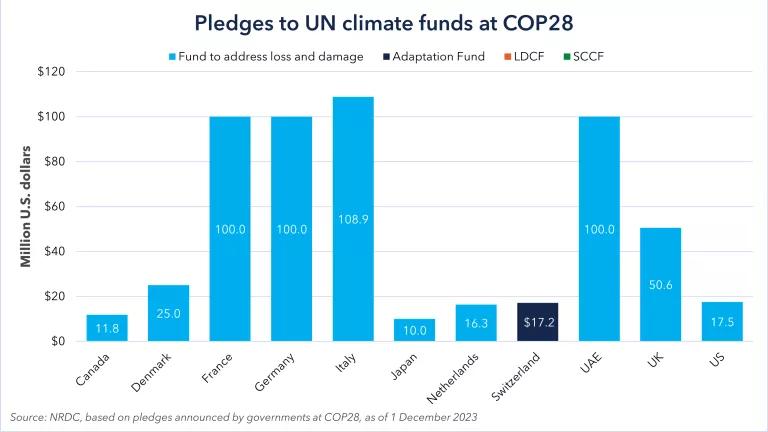 Figure 4 – Pledges to UN climate funds at COP28 (Source: NRDC)
Figure 4 – Pledges to UN climate funds at COP28 (Source: NRDC)
However, close to the beginning of the meeting, VP Harris from the US made a much more adequate commitment
DUBAI, Dec 2 (Reuters) – The United States has pledged $3 billion to the Green Climate Fund, Vice President Kamala Harris said on Saturday in Dubai at the U.N. COP28 climate summit.
The fund, with more than $20 billion in pledges, is the largest international fund dedicated to supporting climate action in developing countries.
The latest pledge, which Reuters was first to report, would be additional to another $2 billion previously delivered by the United States.
It turns out that there is more than one fund dedicated to helping developing countries adapt and mitigate the impacts of climate change. The Green Climate Fund mentioned by VP Harris is the largest. The pledges to that fund as of April 2023 are shown in Figure 5; they do not include the COP28 pledge by VP Harris.
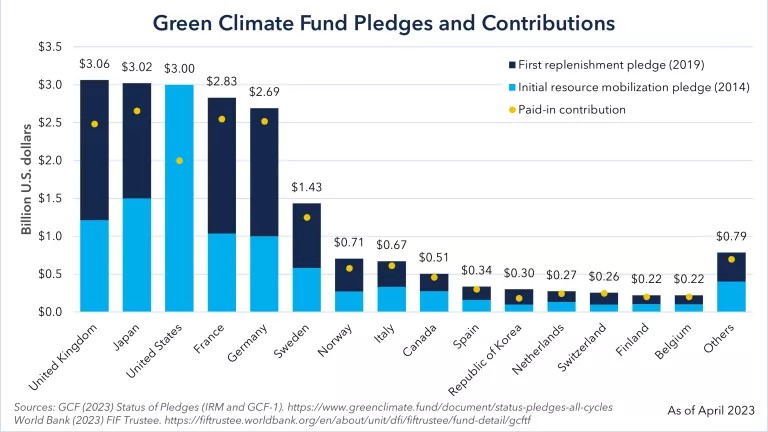
Figure 5 – Pledges and contributions to the Green Climate Fund (Source: NRDC)
Details about the activities that various funds are financing and the management of those funds will be discussed in future blogs. In next week’s blog, I will detour from this issue to address the important topic of how academic campuses are handling the current war situation in the Middle East.

Hi Professor Tomkiewicz,
The main addresses of this blog are very interesting. First, we have the use of AI as a search engine and research instrument. Second, the concrete decision on the Loss and Damage Fund.
Artificial intelligence has quickly become a contentious topic both for its utility and information sourcing. As you mentioned, ‘AI got its “inspiration” from broader public opinion about conflicts between petrostates and the rest of the world.’ Herein lies the problem with AI. AI makes the best efforts to compile the most popular information and can often conflate ideas because it’s limited in its understanding of language and context. This becomes problematic when considering the recent boom of AI usage by vulnerable, younger populations who might see it as a convenient tool. In the context of climate developments, steps need to be taken to ensure that AI doesn’t reflect popular opinion but instead acts as an epistemological researcher with no particular opinion. From my perspective, redundancies should come in the form of ‘reliability’ ratings on the replies given by AI. Such ratings should indicate where the AI may have sourced its information so that it may be fact-checked by its users.
Now, I am happy to know that a Loss and Damage fund has been agreed and worked upon. However, I feel the world is still unable to establish a united front against the climate crisis. There are countries with much to lose (petrostates) and countries with much to gain (developing economies). As further, long-term developments of this Loss and Damage fund have yet to proceed, it’s hard to form an opinion on its efficacy. As I see it, developing economies have much to gain from a Loss and Damage fund; These funds could potentially bolster these economies into the first-world space through the development of photovoltaics, wind/hydro power, and off-grid/small-scale energy solutions. Such a development could remove petrostates as the primary fuel of the world’s economic growth. However, we’ve seen how projections of stated policy actions still underperform compared to net-zero emission models. I too am disappointed with how much the United States has pledged toward the COP28 UN Climate Fund. I feel that this pledge is a reflection of the United State’s priorities. Superficially, we present as a state working towards green developments but the obligations of our state to our nation do not align with this. Notably, we lack serious legislation that limits emissions at the national level. Additionally, our leadership has led to varying global opinions on whether the U.S. has its own interests in mind or those of the greater humanity. For example, our withdrawal and rejoining of the U.S. in the Paris Agreement. Our COP28 UN Climate fund contributions are so disproportionately small (compared to other countries and our emissions output) that I would argue as a nation we aren’t in this fight together.
Although the data in this report is very consequential and significant, what fascinated me the most was the role of the lobbyists. It’s amazing that there were more lobbyists than attendees in most countries– that in society somehow money and corporations are not only above individuals, but nations as well– and that they managed to have such a surprising notable role in this AI summary of a report on the conference of “the parties”– the biggest guy at the party is money.
Hi Professor,
The main thing that stood out to me about this post is the data on the pledges to UN climate funds made at COP28. I’m pleased to see that there are countries pledging large amounts of money, but others seem apprehensive. It breaks my heart that world leaders aren’t willing to pledge large amounts of money to the issue of climate (of course 11 – 17 billion dollars IS a lot of money, but to see that other countries are pledging over 50 billion dollars makes me wonder if countries pledging under 20 billion are capable of pledging more). They have money for literally everything else, but when it comes to saving the planet – saving LIVES – it seems they don’t care too much about that. Still, I am happy to see the big numbers pledged by countries like France, Germany, Italy, and the UAE.
Best,
Zoe
It’s interesting how you were able to collect data from AI to support your research. Another interesting aspect is that affluent nations are responsible for the climate loss and damage fund. Additionally, the graphs offer valuable insights into the actions of different countries and allow for effective comparisons. Utilizing AI in research is a great approach, and it’s also important that you acknowledge the limitations of the tool.
Hello professor,
I believer that this use of AI is absolutely astonishing and beyond useful, especially with how much the world is fearing it to this day. I also believe that having such a large fund is vital towards saving this planet and its people, whether that be before or long after we are all gone. I hope that the world begins to see AI for what it is.
Nikita Bangiyev
Hi Professor,
I think your use of AI to gather information was very interesting. AI isn’t always accurate as it depends on what your question is, what information you provide it and what it has access too. However, I liked that you were able to build your research off of what you found out through AI, being able to back up those claims with data.
Also, it was interesting to look at the data that you provided with the amount of pledges and contributions. There is a really big difference between certain countries and it just shows the difference in resources or awareness.
I, myself, haven’t really thought or researched that much about how much the U.S. is contributing compared to other countries and I learned a lot through this blog about the loss and damage funds and the existence of pledges.
Thank you,
VingGa
Hi professor,
I find it interesting how you were able to gather so much information from AI. You used it as a foundation to build your research around. I admire that.
Additionally, I find the subject of AI in research very fascinating. I have been recently learning more about AI in my spare time and have found that it is important to talk about in the field of research. As more and more people– students and academics alike– use AI for their research, I am worried that AI has a bias. As you and I both know, climate change is a very hot topic in global discussion. Everyone is screaming about it, and on the off chance you’re not, chances are that’s because you’re too scared to acknowledge it. Additionally, there are incentives for people to spread false information about climate change. It’s common for big oil to do so, but also politicians and public-facing people. I’m afraid AI is taking in those loud (and incorrect) screams and letting them worm their way into their system when asked about climate change.
I don’t know what the correct answer is to that. But on your discussion of COP28, I notice already that so much is being said about it. I trust that you’re writing correct and unbiased information on this blog, but I do not trust that everyone knows how to use this information or even just AI.
Thanks,
Niamh Zanghi